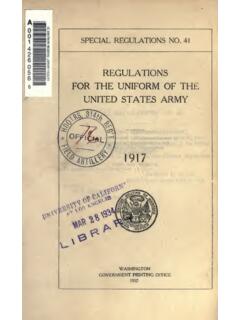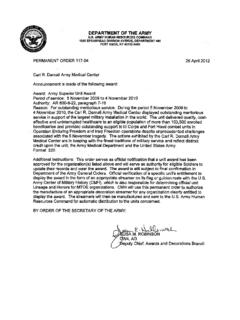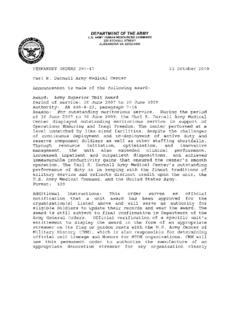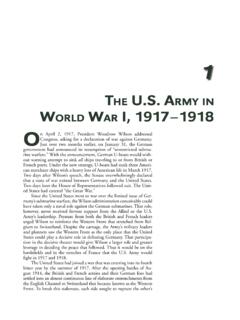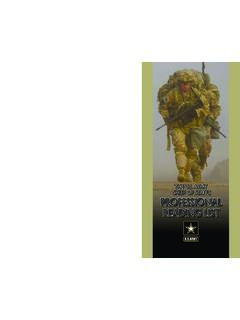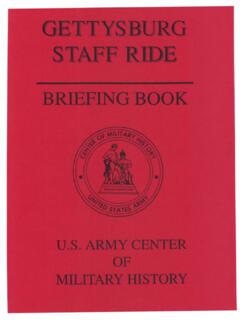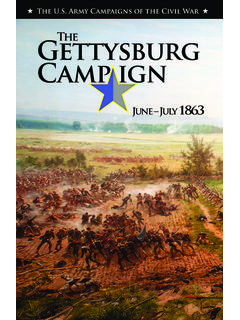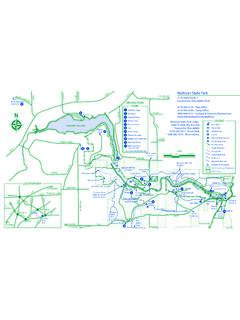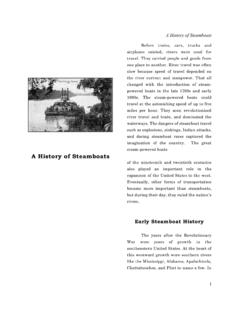Transcription of The Regular Army Before the Civil War, 1845-1860
1 The army Campaigns of the Civil WarRegular army Before the Civil W rthe1845 1860 CMH Pub 75 1 Cover: Detail from The Recall by Don Troiani (Historical Image Bank)byClayton R. NewellCenter of Military HistoryUnited states ArmyWashington, , 2014 Regular army Before the Civil W rThe1845 186055 Introduction Although over one hundred fifty years have passed since the start of the American Civil War, that titanic conflict continues to matter. The forces unleashed by that war were immensely destruc-tive because of the significant issues involved: the existence of the Union, the end of slavery, and the very future of the nation.
2 The war remains our most contentious, and our bloodiest, with over six hundred thousand killed in the course of the four-year struggle. Most Civil wars do not spring up overnight, and the American Civil War was no exception. The seeds of the conflict were sown in the earliest days of the republic s founding, primarily over the existence of slavery and the slave trade. Although no conflict can begin without the conscious decisions of those engaged in the debates at that moment, in the end, there was simply no way to paper over the division of the country into two camps: one that was dominated by slavery and the other that sought first to limit its spread and then to abolish it.
3 Our nation was indeed half slave and half free, and that could not stand. Regardless of the factors tearing the nation asunder, the soldiers on each side of the struggle went to war for personal reasons: looking for adventure, being caught up in the passions and emotions of their peers, believing in the Union, favoring states rights, or even justifying the simple schoolyard dynamic of being convinced that they were worth three of the soldiers on the other side. Nor can we overlook the factor that some went to war to prove their manhood.
4 This has been, and continues to be, a key dynamic in understanding combat and the profes-sion of arms. Soldiers join for many reasons but often stay in the fight because of their comrades and because they do not want to seem like cowards. Sometimes issues of national impact shrink to nothing in the intensely personal world of cannon shell and mini the reasons, the struggle was long and costly and only culminated with the conquest of the rebellious Confederacy, 67the preservation of the Union, and the end of slavery.
5 These campaign pamphlets on the American Civil War, prepared in commemoration of our national sacrifices, seek to remember that war and honor those in the united states army who died to preserve the Union and free the slaves as well as to tell the story of those American soldiers who fought for the Confederacy despite the inherently flawed nature of their cause. The Civil War was our greatest struggle and continues to deserve our deep study and contemplation. RICHARD W. STEWART Chief Historian7 The Regular army Before the Civil War, 1845 1860 The fifteen years that preceded the outbreak of the American Civil War were eventful ones for the army .
6 After invading and defeating Mexico, the army dispersed across the vast Western frontier undertaking a myriad of duties. It subdued American Indian tribes, explored and governed new territories, and generally worked to maintain peace. At the same time, it supported national development through mapping and engineering projects, grew in size, and undertook important steps toward modernization. While these activities did not fully prepare the army for the cataclysm that was to come, they did provide opportunities for officers to hone their leadership skills under trying conditions.
7 Many of the men who would become generals during the Civil War first tasted battle as junior officers in Mexico and the American West. The united states army in 1845 The united states army in the early nineteenth century was a modest institution. Concerns over economy and the threat that a large army might pose to liberty led many Americans to regard the army as a necessary evil at best. Fortunately, the relative security afforded by vast oceans and sparsely populated neighbors created a situation in which the united states could survive with a small military establishment.
8 By 1845, the united states had about 7,300 89men under arms to protect a nation of nearly 20 million people and million square miles of territory. In contrast, Belgium s proximity to the great powers of Europe led that country of just over 4 million people and 12,000 square miles to maintain an army of about 30,000 men. Even Mexico, a nation of 7 million people with whom the united states would soon be at war, maintained a Regular army of over 18,000 men with another 10,000 militia on active duty. If Americans enjoyed relatively inexpensive security in peacetime, a disorderly and costly rush to mobilize the nation s untapped financial and human resources would be the inevitable price for unpreparedness should the nation go to war.
9 Such had been the case when America went to war with Great Britain in 1812, and the upcoming war with Mexico would be no under the Department of War headed by a civilian secretary, the army was divided into bureau-cratic and combat elements. The bureaucratic side of the army consisted of 259 staff officers, 17 military storekeepers, and about 450 enlisted men organized into nine staff departments or bureaus. Heading these bureaus were the Adjutant General, the Inspector General, the Paymaster General, the Quartermaster General, the Commissary General of Subsistence, the Surgeon General, the Chief of Ordnance, the Chief of Engineers, and the Chief of Topographical Engineers.
10 These bureau chiefs oversaw the army s logistical and administrative affairs in fairly autono-mous fashion. Although they reported to the secretary of war, the bureau chiefs were jealous of their prerogatives, enjoyed direct relationships with Congress, and tended therefore to be difficult to control. Also reporting to the secretary of war was a commanding general, whose exact role vis vis the bureau chiefs was ambiguous and fraught with tension. As for the army s combat forces, these consisted of fourteen regiments eight infantry, four artillery, and two dragoon.
